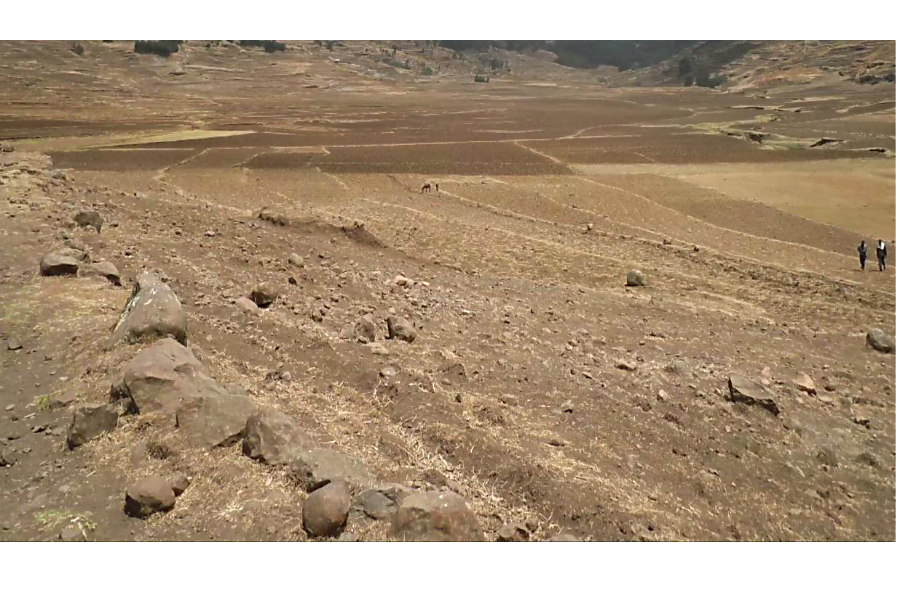Digital soil mapping project gives Ethiopian farmers new fertilizers
Loading...
| Addis Ababa, Ethiopia
A comprehensive digital map charting soil fertility in Ethiopia is proving an important tool in tackling the country's low farm productivity, a challenge made more acute by climate change.
The nationwide mapping effort was launched by the Ethiopian Soil Information System (EthioSIS) in 2012, and is due to be completed this year.
The project in the Horn of Africa nation is already achieving results, with new fertilizer combinations boosting wheat yields from around 1 ton to 3 tons per hectare (about 2-1/2 acres) on more than 40 percent of its agricultural land last year.
Tekalign Mamo, program leader for EthioSIS, said fertility and other soil characteristics are dynamic processes that must be well understood for a country to be able to feed its population.
"Through the years, the soil fertility status of Ethiopia – similar to other African countries – has deteriorated, and (it) has faced severe nutrient depletion and land degradation," he explained.
"Due to human activities like deforestation, we have experienced changing rain patterns, resulting in effects like flooding and soil erosion," he said.
Agricultural land is damaged by soil acidity, salinity and erosion, which are mainly manmade problems that have seen productivity stagnate, he said.
Ethiopia's average cereal yield is little more than 2 tons per hectare, which is very low compared to international standards, Mamo noted.
To help combat this, EthioSIS proposed the soil survey to the government, to enable fertilizers to be matched with local soil conditions and crop requirements, he said.
The resulting state-of-the-art digital mapping project combines satellite imagery with data from the ground and historical information, to analyze soils and rainfall in different areas and recommend suitable fertilizers and crops, Mamo said.
"We understood that the fertilizer we have been using – especially DAP (diammonium phosphate) – is not relevant for Ethiopia, since it lacks major nutrients. Therefore we changed that formulation," Mamo said.
During the soil surveys, farmers are introduced to new fertilizers to test. Five fertilizer blending plants have also been established in the four regions with the largest agricultural production to supply appropriate fertilizer combinations.
Demand for them is high, said Tegbaru Bellete, senior project officer at the Ethiopian Agricultural Transformation Agency. The government hopes the project will lead to a fertilizer advisory service for farmers, boosting their harvests and incomes, he added.
In developed countries in particular, fertilizers are tailored to the needs of the soil, he noted.
"Nutrition must start in the food we grow, in soils, in the form of balanced fertilization. Unfortunately, this has not been the case in many countries in Africa," he added.
This year, large parts of eastern and southern Africa – including Ethiopia, Somalia, Zimbabwe, Malawi and South Africa – were hit by a strong El Niño climate pattern, said Mamo of EthioSIS.
The El Niño, which fizzled out around May, brought drought to many areas and excess rain to others, hurting harvests and causing food shortages.
But in the future, a deeper understanding of soils may help head off hunger in places affected by climate extremes, he said.
Better water management, including rainfall harvesting and small-scale irrigation, could also make a difference, he said.
Yields of wheat, teff, coffee and beans could be doubled or tripled in some parts of Ethiopia such as Amhara and Oromia, he added.
"If we increase productivity, we could produce (a food) surplus and feed those areas that are hit by threats of climate change," he said.
Since the digital soil fertility mapping began, Ethiopia has experienced an influx of international fertilizer companies including Israel-based ICL and Morocco's Office Cherifien de Phosphate (OCP), Mamo said.
ICL, the International Potash Institute (IPI) and donor-backed agriculture programs have been working with EthioSIS to develop and provide new fertilizer blends adapted to local soils.
Tanzanian officials have visited Ethiopia to learn how the digital soil mapping is done, setting up a similar soil information service in 2015 – and other countries are interested too.
Lilian Wanjiru Mbuthia, East Africa coordinator for Switzerland-based IPI, said improved soil knowledge would allow more sustainable production with minimal land degradation.
"This, in the long term, will mitigate negative climate change effects and result in increased confidence towards attaining food security in East Africa," she said.
• Reporting by Pius Sawa; editing by Megan Rowling. This story originally appeared on the website of the Thomson Reuters Foundation, the charitable arm of Thomson Reuters that covers humanitarian news, women's rights, trafficking, corruption, and climate change. Visit www.news.trust.org.







